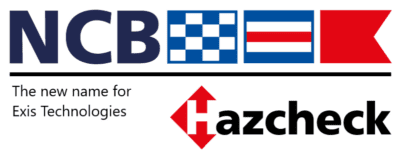Open the box – Hazardous Cargo Bulletin
CONTAINERS
Why should carriers want to inspect boxes before loading aboard ship? Exis Technologies explains what they are doing and how they can do it better
It is estimated that up to 10 per cent of all containers contain dangerous goods; that means that the new generation of ultra-large containerships can be carrying more than 1,000 boxes with dangerous goods (DG) on any given voyage.
Ocean carriers have to undertake a significant number of complex but critical checks on each DG consignment, for each leg of a vessel’s voyage.
- Most lines restrict or prohibit certain classes of DG (particularly explosives, radioactive materials and some organic peroxides in reefer containers) so the booking line needs to know if any partner line that may be involved in the voyage will accept the box or boxes.
- Detailed stowage requirements (such as on deck only, away from accommodation, or away from sources of heat) mean that suitable space is finite.
- Many ports and individual container terminals have strict rules on the classes of DG that can be loaded, unloaded or transhipped, or even present on board while the ship is in port. Significant disruption can ensue if the ‘wrong’ DG is aboard a ship.
Shipping lines carry out these checks to ensure the cargo is safe to carry to protect the crew, vessels and the environment; safety of life and cargo and at sea is paramount.
Of course, the checks listed above assume that the shipper has properly declared the cargo as DG in the first place. In most cases shippers do try to do this but mistakes can be made due to lack of competence; unfortunately in some cases there is wilful mis-declaration to save costs or time. In other cases the cargo may have been properly declared, but when it comes to packing and stowing the cargo in the container the correct procedures may not have been used.
Unless the container is physically opened and inspected by the shipping line or the authorities then it is impossible to know if the cargo is completely safe for transport.
The diagram below shows the current landscape with regard to shipment of dangerous goods by sea.
GETTING IN THE BOX
Before the cargo is loaded on a ship, shipping lines will make extra checks to determine if any bookings could be undeclared DG. Hapag Lloyd, for instance, uses a tool called Cargo Patrol it has developed specifically to search bookings for possible issues.
If the cargo is declared as DG then shipping lines can use tools such as Hazcheck, from Exis Technologies, to check if the declared cargo complies with the International Maritime Dangerous Goods (IMDG) Code and other local rules and restrictions. Exis works with nine of the top ten container lines.
The final option is then to physically inspect selected bookings/containers before they are loaded to check if cargo is declared correctly and packed/stowed.
On average over the last ten years, fewer than 60,000 containers have been inspected each year by the reporting Competent Authorities. According to data from the TT Club, based on reports from four countries, deficiencies are on average found in about 15 per cent of containers.
Cargo surveyors who inspect containers prior to loading on behalf of container lines include, for example:
Port Supervisor, which has averaged a 17 per cent rejection rate in the 25,000 containers it has inspected over the past five years; 12 per cent were serious enough to stop the shipment; and
National Cargo Bureau (NCB), which has carried out more than 30,000 inspections in the last 12 months with 9 per cent failure rate.
Most cases of non-compliance by these two bodies related to declared dangerous goods.
There are a variety of reasons for rejection: leaks, documentation, segregation, placarding/marking – which is the most common problem – and packing/stowage issues.
With 10 million-plus DG containers shipped per annum (a broad estimate), then at a 9 per cent failure rate it is easy to see the size of the issue.
HOW IT WORKS
The inspection process takes time and costs money so not every declared DG container is inspected; indeed, not every container line has the same regime. Nevertheless, the number of inspections is increasing. It is becoming clear that it would be valuable to have a database to record and analyse the findings so that the data can be used to address issues with the appropriate parties.
Exis Technologies has been working with the two container inspection companies, NCB and Port Supervisor Rotterdam, to develop a new container inspection system in line with customer requirements. Earlier this year Exis announced the launch of Hazcheck Inspections, a web-based database and access portal for inspection companies to plan and enter details of cargo inspections completed on behalf of container or vessel operators.
The solution allows the container or vessel operator to login with secure access and view or download inspection results and/or analytics. Consistent data is recorded and reported regardless of where and who records the inspection result. Non-confidential analytics data can be shared with partners and third parties to help influence policy with respect to the shipment of dangerous goods by sea.
Operators have the option to send cargo details to the inspection company so they can plan containers to select for inspection. Pre-entered planned data can be re-used when the inspections details are recorded.
The benefits of Hazcheck Inspections include reporting inspections into a common database, consistent reporting and analysis of data. Operators have the option to share non-confidential data with partners and third parties, such as the Cargo Incident Notification System (CINS).
WHAT THEY SAY
Bob Ahlborn, NCB’s New York-based vice-president, liner activities, comments: “We are happy to be working alongside Exis Technologies on this exciting project. This is a ground-breaking system which we are confident will improve the accuracy and timeliness of information that container inspection companies like NCB and shipping lines will be able to use to improve safety of life and cargo at sea”.
Founded in 1952, NCB is a non-profit organisation headquartered in New York and operating nationally across the US; its sole mission is promoting the safety of life and cargo at sea. NCB has been working closely with Exis Technologies to develop the Hazcheck Inspections specification, including the user interface and the type of data that a DG container inspection needs to focus on and collect.
Port Supervisor BV started activities in 2011 as an independent company providing specialised services for the shipping, port logistics and insurance industries. Its core business includes risk services, hazardous cargo management and surveys involved in the handling, packing, storage, warehousing, transhipment and carriage of hazardous and general cargoes.
Port Supervisor gave important input to the Hazcheck Inspections specification relating to the pre-planning of inspections prior to cargo loading on vessels and how the planning links to the recording of the actual inspections. John Verhoeckx, principal of Port Supervisor, points out: “Exis is not only an IT developer but also has an in-depth knowledge of the shipment of dangerous goods. Combined with Port Supervisor’s experience of container cargo inspection, we have been able to design a database that will help to improve the safe shipment of cargo.”
With two major companies on board the database has had a kick start but the next challenge is to encourage other similar companies to help build up a database of activity and DG declaration issues on a global basis.
www.hazcheck.com







